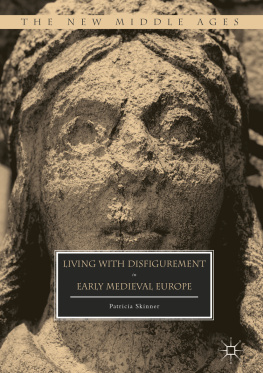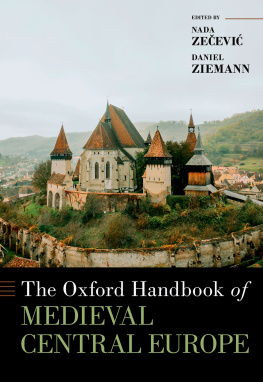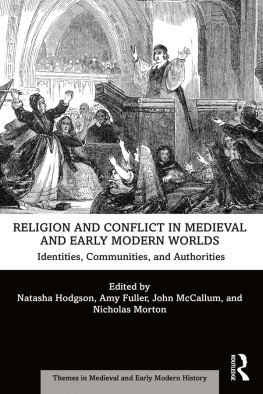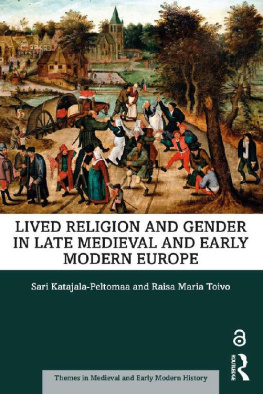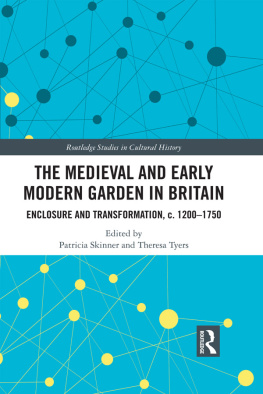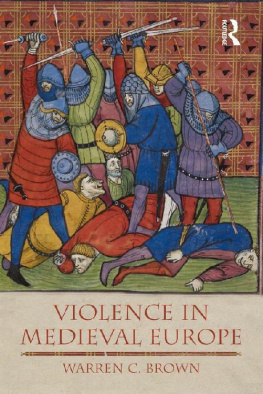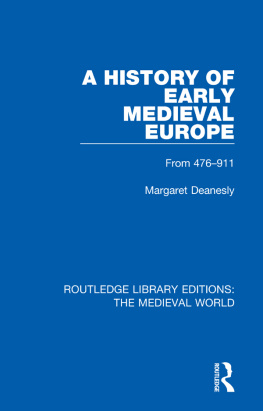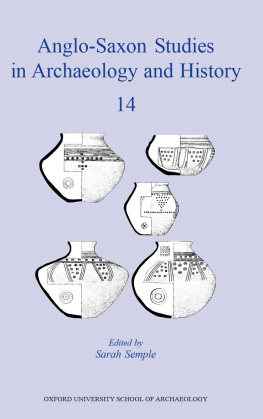1. Introduction: Writing and Reading About Medieval Disfigurement
Probably from a social point of view, a simple facial disfigurement is the worst disability of allthe quickly-suppressed flicker of revulsion is, I am certain, quite shattering.
All of this work, however, and the very few studies that have sought to trace the history of aesthetic or cosmetic surgery, start from the assumption that acquired facial disfigurement is and was, universally, a stigmatizingworse, a disgusting condition.
The early Middle Ages have not fared well within this teleological framework of surgical and medical progress: it is telling that studies of later medieval medical and surgical texts have highlighted their rational nature, and through such apologetic the authors of these studies have revealed their own attachment to post-Enlightenment, scientific approaches to medicine.
This book seeks to address such omissions through examining social and medical responses to the disfigured face in early medieval Europe, arguing that head and facial injuries can offer a new contribution to the history of early medieval medicine, as well as offering a new route into exploring the language of violence and social interactions. In its early stages, the research underpinning the book was, it is fair to say, very much shaped by some of the assumptions outlined abovethat medieval people would view disfigurement with at best ambivalence and at worst disgust. Yet this assumption has never been effectively tested within previous historiography. Despite the prevalence of warfare and violence in early medieval society, and a veritable industry studying it (largely, if not exclusively, focusing on the later Middle Ages),
In terms of a social history of facial disfigurement, however, newer fields of medieval studies are highlighting the lives of hitherto unnoticed groups, and offering potential approaches to the topic. A growing body of work exploring medieval impairment and disability touches upon the sensory impairments resulting from political and judicial mutilations of the head and face, and studies of specific groups of people with physical impairments in the medieval past are increasingly being published.
Yet facial disfigurement remains a poorly-understood topic in medieval history, partly because it relates to all of these sub-fields of historical enquiry, and yet belongs wholly in none of them. Combining the insights of historians of disability, forensic archaeologists, scholars of literary and visual culture and the histories of premodern medical practice with a renewed interrogation of early medieval primary sources, it is possible to explore several key questions:
How prevalent was acquired cranio-facial disfigurement in early medieval Europe (including the Byzantine empire and Mediterranean littoral)?
How did it occur and why?
In what contexts, and with what kinds of language, did it come to be recorded?
How did contemporaries treat the disfigured face (medically and socially)?
The aims of this book are to document how acquired disfigurement is recorded across different geographical and chronological contexts; to examine how the genre of text affects the record of injury and responses to it; to determine the specific medical and health implications that such punishments had for the individual and her/his community; to compare the practical knowledge available in different locations across time to deal with the aftercare of such injury, and ask whether it was applied.
Geographically, the range of the study is wide: sources from Ireland, the Byzantine Empire and most (but regrettably not all) regions in between are mined for examples of disfigured men and women (whether actual, or imagined), and account is taken of regional and linguistic difference, the possibilities of transmission of disfiguring practices, and the potential medical care available at the point of injury. Chronologically, the study ranges from late antiquity (often as reported in early medieval sources) to the pivotal twelfth century. The latter functions as both end point for logistical reasons (the study had to stop somewhere) but also as a point when, besides the legal and intellectual revolution known to older scholarship as the twelfth-century Renaissance, the political landscape of Europe was becoming increasingly defined, and claims to authority (in particular the right to define social outsiders and inflict mutilating punishment) were being negotiated in light of western Europes increasing interactions with both Byzantine and Muslim neighbors. The impact on the physically impaired of the formation of the persecuting society has not yet been fully worked out, except in economic terms, but it seems that there was a heightened awareness, at the end of the period under discussion, of the messages encoded in damaged facial features. Insofar as the source itself was interested in such matters, an attempt is made, therefore, to explore the before and after of selected cases of acquired disfigurement, and to situate them in the broader social norms of early medieval societies.
Congenital vs. Acquired Conditions
It is important at the outset to define the parameters of the study, and in particular to explain its focus on acquired, as opposed to congenital, disfigurement. Within medieval society, the birth of a child with a congenital impairment might provoke a series of responses: it might not be cared for as well, in the hope of a swift and early death; its birth might be interpreted as a punishment from God for a perceived misdemeanor by the mother, or both parents; it might be abandoned, or made a gift to the church; or it might be nurtured, and allowed its place in the family (it is possible to imagine that a couple who had already had healthy children might respond more positively, whilst an impaired firstborn might be viewed rather differently).
By contrast, the vast majority of references to acquired disfigurement in early medieval sources present it as a sudden transformation resulting from interpersonal or group violence among human beings rather than the result of a supernatural intervention, with the exception of hagiographic texts where a saint suddenly punishes a transgressor for perceived or actual sins. Groebner was chiefly concerned with the visual impact of such violence, and his work largely reinforces long-held stereotypes about the cruelty and violence of the later Middle Ages, but to a great extent it ignores the earlier period, not least because the judicial world in which his subjects lived had been profoundly altered by the resurgence of Roman legal studies in the twelfth and thirteenth centuries, with their emphasis on punitive, rather than compensatory, justice. Groebners work, however, pointed up the need for more work to be done on the face as a specific site of identity and violence, a need that the present study tries to address.
Lying between the two fields of congenital disfigurement and its sudden acquisition during adulthood is the progressive disfigurement brought about by disease, in particular leprosy. Lepers were a special case in that they were increasingly excluded and housed in separate spaces from the medieval community, but it was their contagious disease, rather than its visible results, that was the reason. Their condition was one to be pitied, and offered the opportunity for the well to provide charity to this special group. Whilst it is entirely possible that some people with disfigurements were mistaken for lepers, the analytical categories of lepers and disfigured people have far more differences than analogies.

